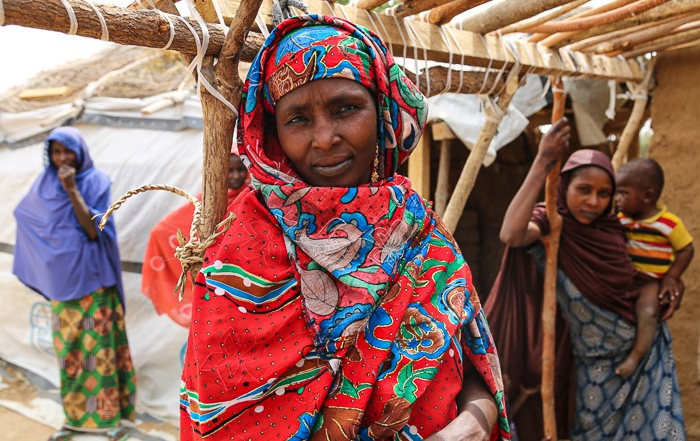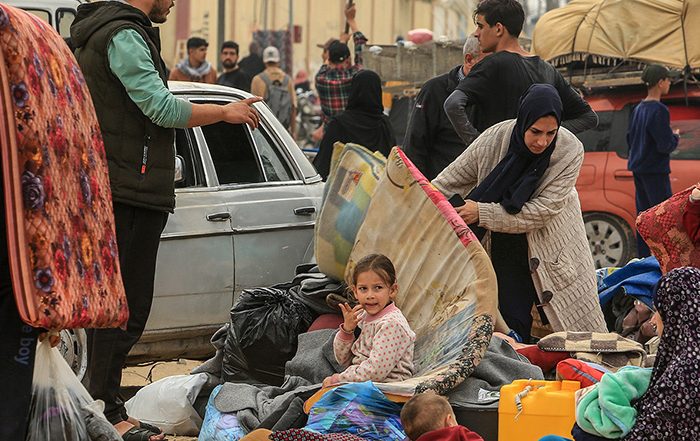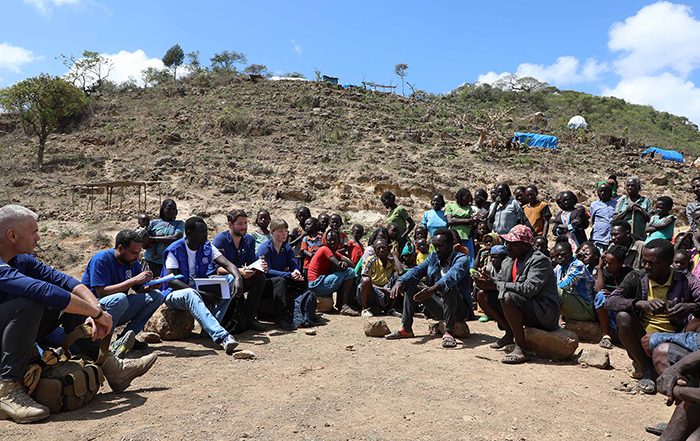
Gaza. Photo credit: Mohammed Zaanoun
Jack Bailey – February 2025
Why the Gaza ceasefire must hold
“As the conflict pauses and hostages and prisoners are returned, Palestinians living in Gaza are suffering. Now is the most important time to continue our effort to provide life-saving aid to people affected.
As we gain access to more areas, we are able to get more aid to more people.
We must double down our efforts to make sure people have somewhere to live. The only way to do that is by people coming together, helping and donating.
500,000 people have returned to the north of Gaza. For a long time, this was separated from the south by the Netzarim corridor. This is an area of land that was taken by the Israeli military. It split Gaza in two and prevented people from moving from the north to south in either direction.

Gaza camps.
We expect people will continue to move to the north as the access improves and the risk of unexploded bombs reduces.
More than 90% of homes are damaged or destroyed. As people return, emergency shelter will continue to be a priority. Shelter is a basic primary need. Without adequate shelter people cannot live.
Recovery and rebuilding will take years. Our aim right now is providing basic, emergency, and temporary shelter to keep people alive. It will give people a foothold to the next steps on a path to recovery.

A family in Gaza. Photo credit: Mohammed Zaanoun.
Tents will be needed to construct camps for people unable to return to their homes. Tarpaulins and rope and fixings will be needed to make damaged buildings watertight.
As winter turns to spring, we must keep winter in our minds and be prepared to meet those needs later in the year.
Ceasefire
The ceasefire is something we have been hoping for, for a long time.
The trickle of aid allowed into Gaza throughout the conflict has been woefully inadequate.
It’s only with an end to the brutal violence that humanitarian charities like ours have any chance of getting the sheer amount of aid needed into Gaza.
People are prevented from leaving the territory even if they wanted to. With the ceasefire, we hope that:
- Our partners will have unhindered access,
- Our partners lives, and the lives of the wider population, will no longer be at risk,
- The uninterrupted flow of aid will be able to meet the immediate needs of the population. A population which has been deprived of essential life sustaining aid for 15 months.

Working alongside vital partners MAP, SDF and PARC, ShelterBox is providing tents to people displaced in Gaza.
ShelterBox and our partners can do more now that there is a ceasefire.
As the ceasefire was announced, we had trucks of tents entering Gaza.
The quantity of aid entering Gaza, while still not enough, has significantly increased. This is helped by the improved security situation. Looting has eased, and risks to our materials – caused by delays and airstrikes, are diminishing. This is dependent on the ceasefire continuing.
The challenge for our partners
Meeting the shelter needs of so many in such a hard-to-access part of the world is an enormous challenge. The limitation in access has prevented our partners from reaching people. The closure of the borders has prevented vital aid that people need to survive.
The conflict showed that nowhere and no one is safe in Gaza. The Israeli military targeted schools, hospitals, tents, camps, residential buildings, and mosques.
This meant that areas deemed as ‘safe zones’ became active conflict zones in a moment’s notice.
At one point, our partners’ office became inaccessible. The Israeli military reclassified it as a ‘red zone’ – meaning it could be targeted by airstrikes.
Our partners and colleagues are living through immense suffering and uncertainty. Their families and friends’ lives are at risk. This is an impossible reality to come to terms with.
The resilience and dedication that our partners show is an incredible thing. They attempt to meet the needs and reduce the suffering of the people of Gaza.

Two boys in a camp in Gaza.
Rebuilding Gaza and recovery
We are seeing people moving back to their communities. These improvements represent a significant change.
Yet, there is a long path ahead for Gaza. There are unprecedented levels of destruction in the area. The UN describe apocalyptic scenes in the north. The trauma that people have endured will take generations to recover from.
Gaza will need a permanent ceasefire and end to the conflict to allow a rebuild to take place.
It’s only with an end to the violence and destruction that meaningful recovery can take place. Huge amounts of debris need to be removed. Areas need to be made safe by removing unexploded bombs and other contamination.
Once there is space and most importantly funding available, the rebuild will start.

The remains of a home in Gaza. Photo credit: Mohammed Zaanoun.
Preventing conflict
Before October 2023, people in Gaza were living under the occupation of the Israeli authorities. Frequent human rights violations occurred.
The people of Gaza exist without freedoms and rights. All people are entitled to these rights – under international humanitarian law. Unless these systemic issues are addressed within a peace process, the region will continue to be locked in a conflict.
Suppression of human rights will perpetuate instability and risk of future conflicts.

A temporary camp in Gaza.
Our response to date
With the hard work of our partners, ShelterBox aid has reached more than 15,000 people in Gaza, since the escalation in 2023. This includes emergency shelter, like tents, tarpaulins, and plastic sheeting. As well as rope, mattresses and thermal blankets, kitchen sets, and washing and hygiene kits.
This aid has been distributed by our partners – Medical Aid for Palestinians, Social Development Forum (SDF), and the Agricultural Development Association (PARC).

Working alongside vital partners MAP, SDF and PARC, ShelterBox is providing tents to people displaced in Gaza.
We are in regular communication with our partners. We offer technical support and guidance on the delivery of emergency shelter. However, our partners make it possible for us to get ShelterBox aid into Gaza and distribute it to people.
We will need to be flexible in meeting the changing needs in Gaza. We are fortunate to have partners who are well embedded into the local population and who have access across the whole region. Aid delivery, however, is contingent on a ceasefire, which has no guarantee of lasting.”




